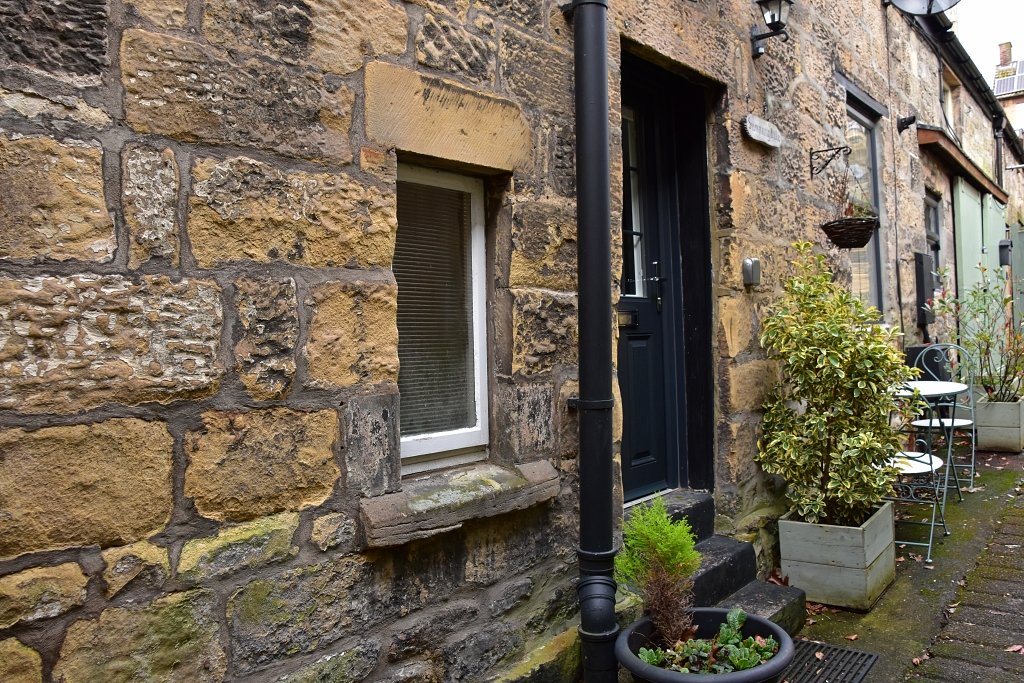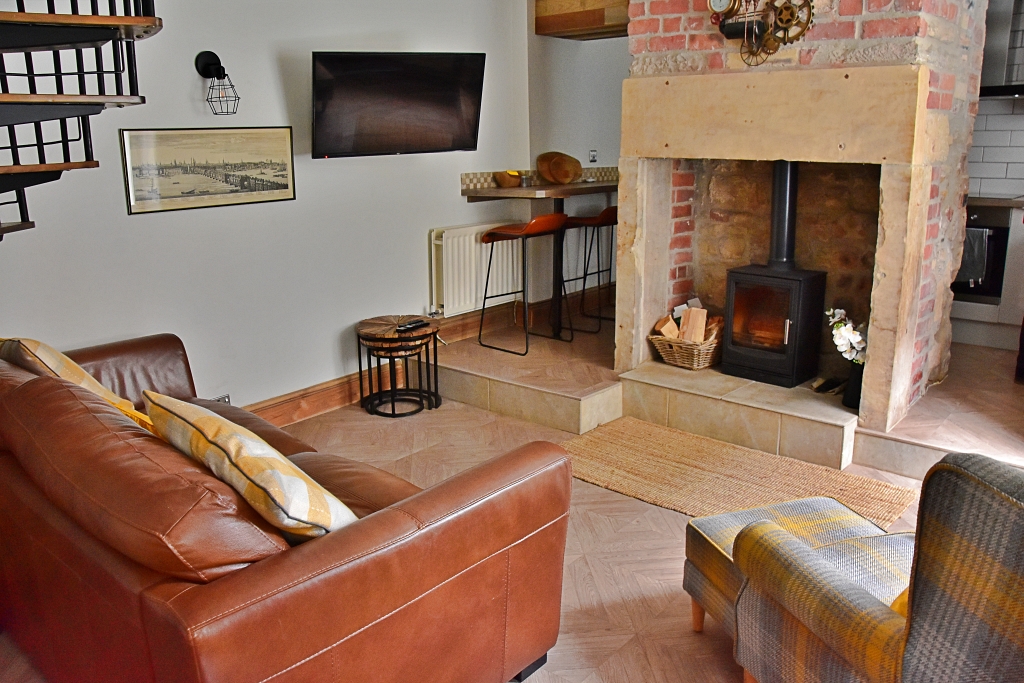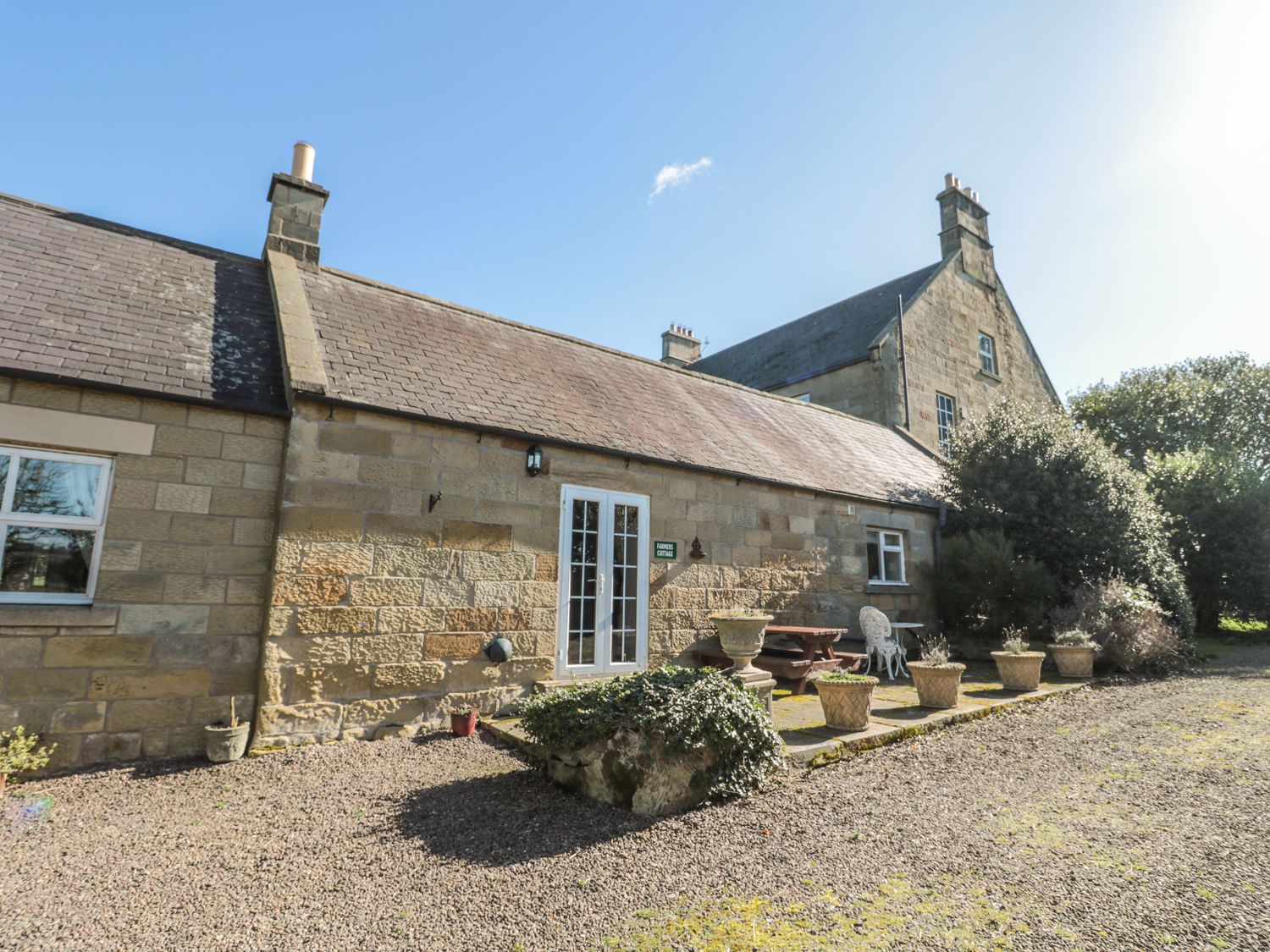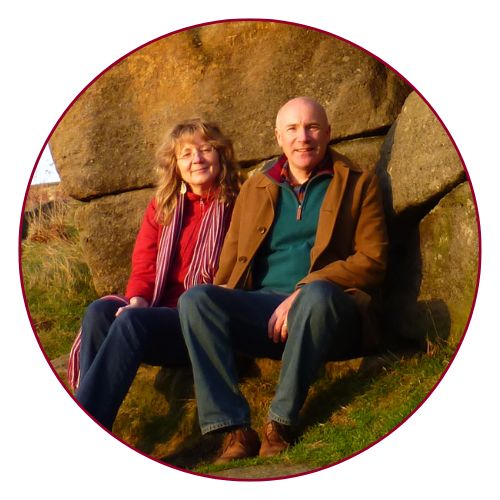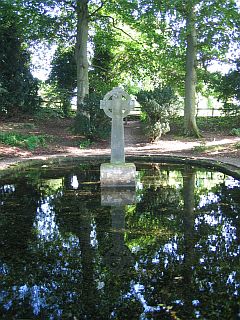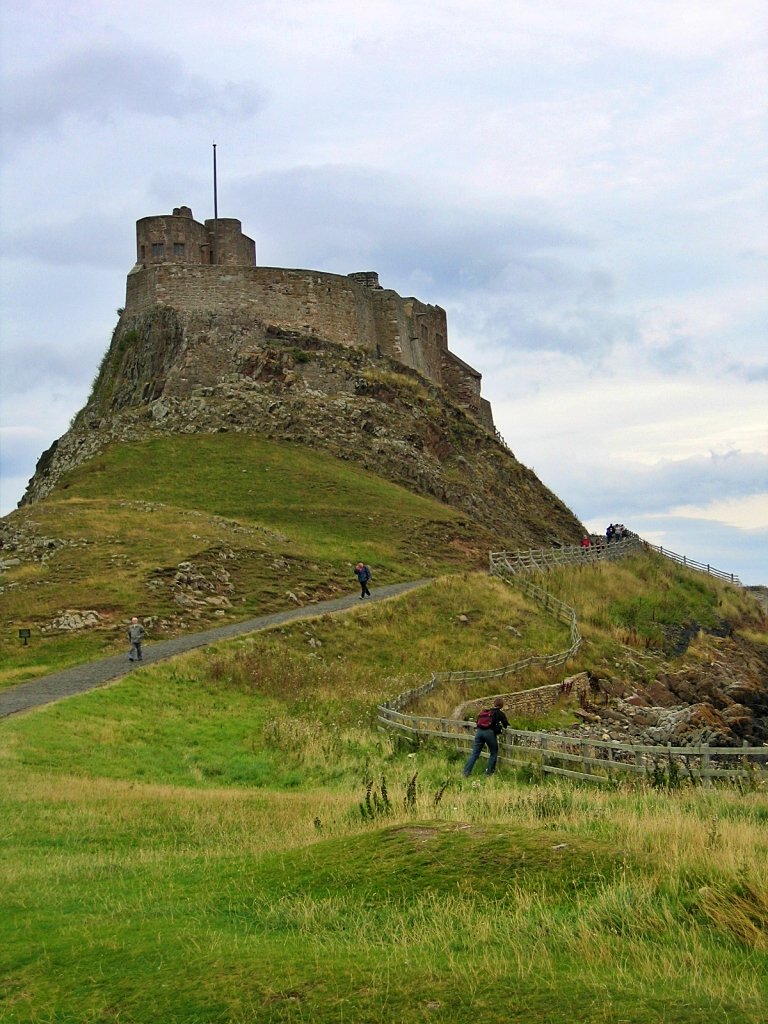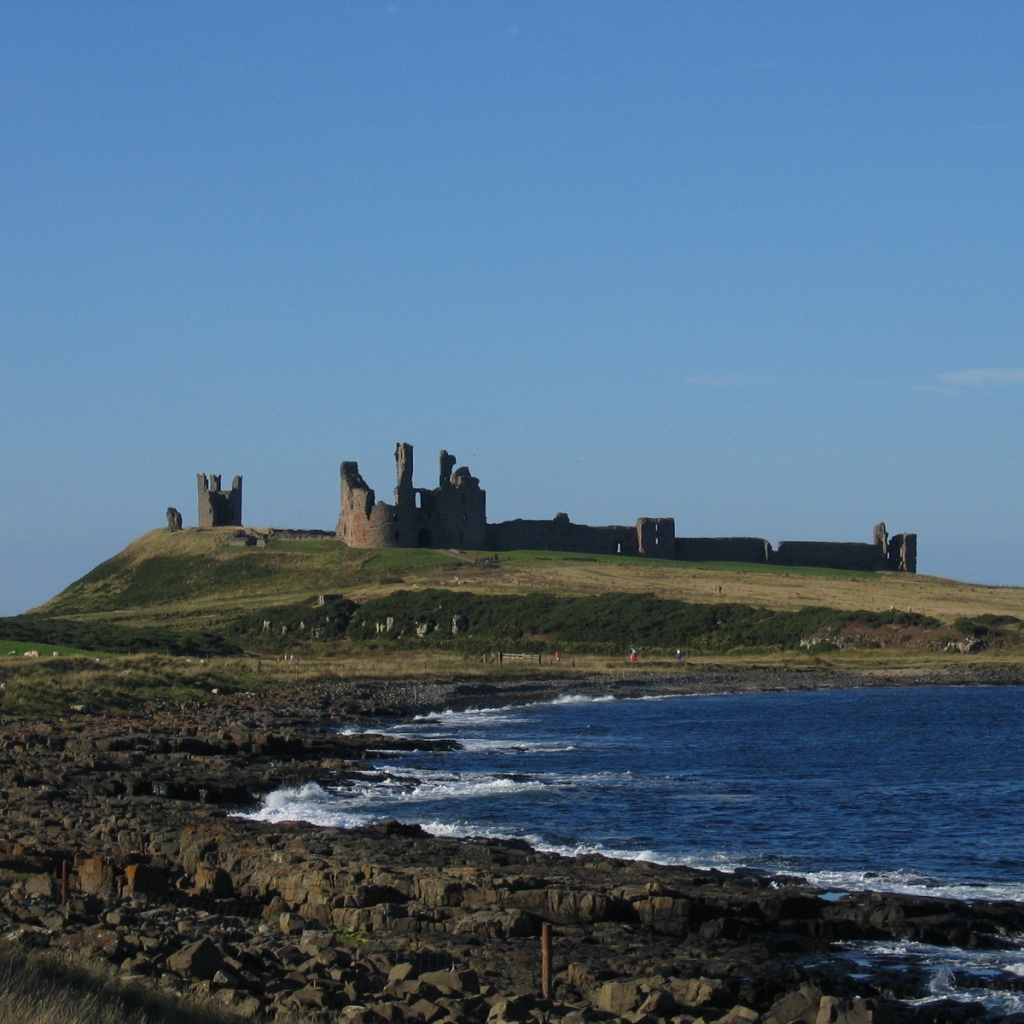The
Gertrude Jekyll Garden at Lindisfarne Castle
One highlight of our first visit to Lindisfarne many years ago in the pre-internet age, was discovering a tiny walled garden nestling in a fold of land beneath Lindisfarne Castle. I caught sight of it from the castle's upper battlements, astonished that I’d missed seeing it on the way up. But even after leaving the castle and standing on roughly level ground, I found it difficult to spot the tiny gem of a place, which the guidebook listed as the Gertrude Jekyll Garden.
This year, we visited on a grey, blustery day in early spring and found the garden still half-asleep, and also not as secreted away as I remember it being. The walls that wrapped around it and shielded it from wind and weather were more of a feature in the landscape, not just from the battlements, but from level ground, too. While some of the almost-enchantment I remembered from our summer visit was gone, seeing the garden in its winter state, just ready to return to life, was an equally magical moment, and definitely one that deserves to be repeated.
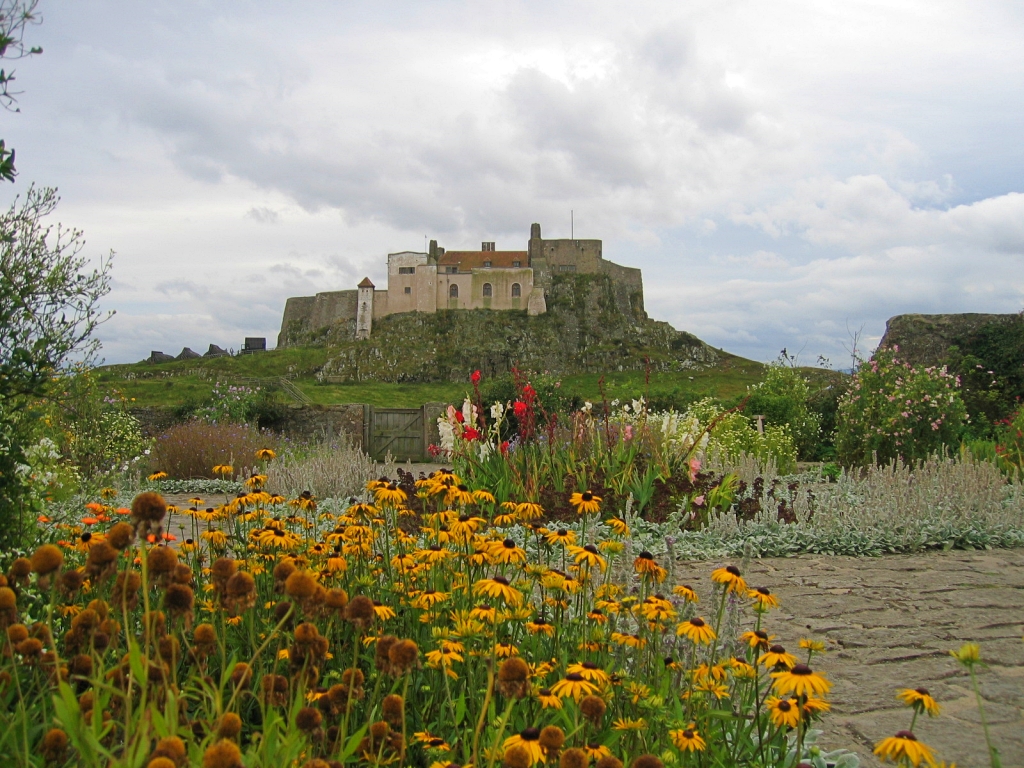 The Gertrude Jekyll Garden at Lindisfarne Castle During September © essentially-england.com
The Gertrude Jekyll Garden at Lindisfarne Castle During September © essentially-england.comArchitect Edward Lutyens, who converted Lindisfarne Castle from a neglected, unused military fort into a quirky, gothic holiday home for Edward Hudson, the owner of Country Life magazine, paid the utmost attention to even tiny details. Everything he wrought inside the castle was done with an eye to craftsmanship and the sympathetic use of materials and location.
When it came to the castle garden, he didn’t change his approach. Instead, he invited his friend and collaborator Gertrude Jekyll to design the garden, and between them, they chose to turn the site of the former fort's walled kitchen garden into a magical secret space.
The Gertrude Jekyll Garden
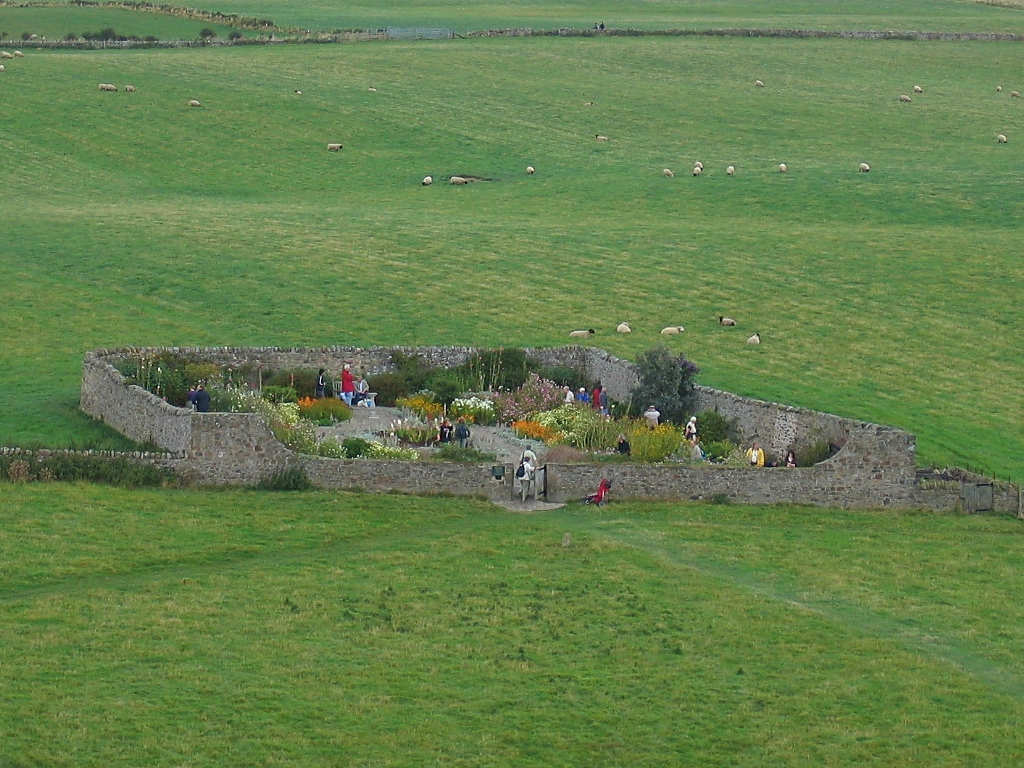 View of the Gertrude Jekyll Garden from Lindisfarne Castle © essentially-england.com
View of the Gertrude Jekyll Garden from Lindisfarne Castle © essentially-england.comThe first time we saw it, Gertrude Jekyll’s garden was in full bloom - a glorious mix of silver foliage, purple lavender, and colourful cottage garden plants like hollyhocks, sweet peas, delphiniums, and anemones. Roses and clematis mantled the walls, with fuchsias tucked in the gaps between them, and deep red sedum drew the eyes to the centre of the design. Cradled by its walls and with the sun overhead, it was easy to forget that the sea was just yards away.
It's a garden that is light and uplifting and wonderful. Even at the sad tail end of winter, on a day without sun, under the weight of lowering clouds, the garden retained that uplifting vibe. Signs of life were everywhere. Tulips were emerging from the ground. Buds on shrubs and bushes. The first daffodils braving the wind. Sheltered by its position as much as its grey stone walls, the garden was a sleeping beauty, waiting for just the right touch to wake and stretch and bloom.
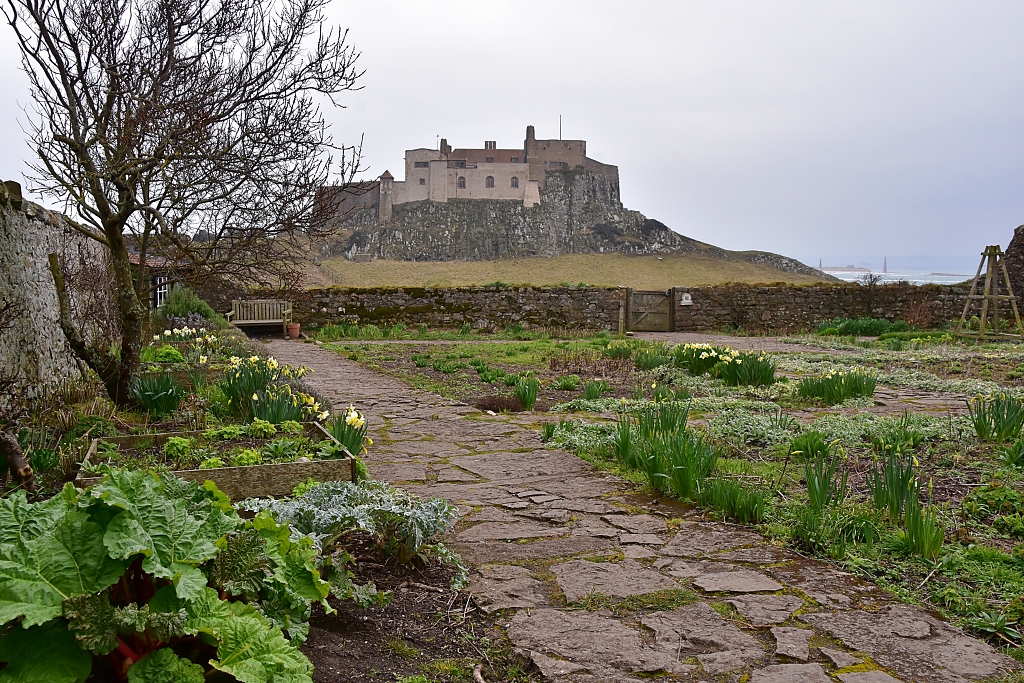 Early March in the Gertrude Jekyll Garden © essentially-england.com
Early March in the Gertrude Jekyll Garden © essentially-england.comGertrude Jekyll designed her garden to look its best in the summer, when Hudson and his friends would spend their holidays on the island. And it’s truly magnificence then.
But don't pass it by if you arrive out of season. Cross the grassy patch beneath the castle walls and pay it a visit. Sit quietly in a corner in a moment of contemplation, listening to the wind or just enjoying the silence. It’s the perfect place for it.
It came as a surprise to learn that Gertrude Jekyll never saw her garden planted or bloom. She visited only once, in 1906, created the design for this small, magical space, and never returned to see how it turned out! I like to think that it's the sign of an accomplished artist, this ability to send their creation into the world after giving it the best start possible and then let it develop on its own.
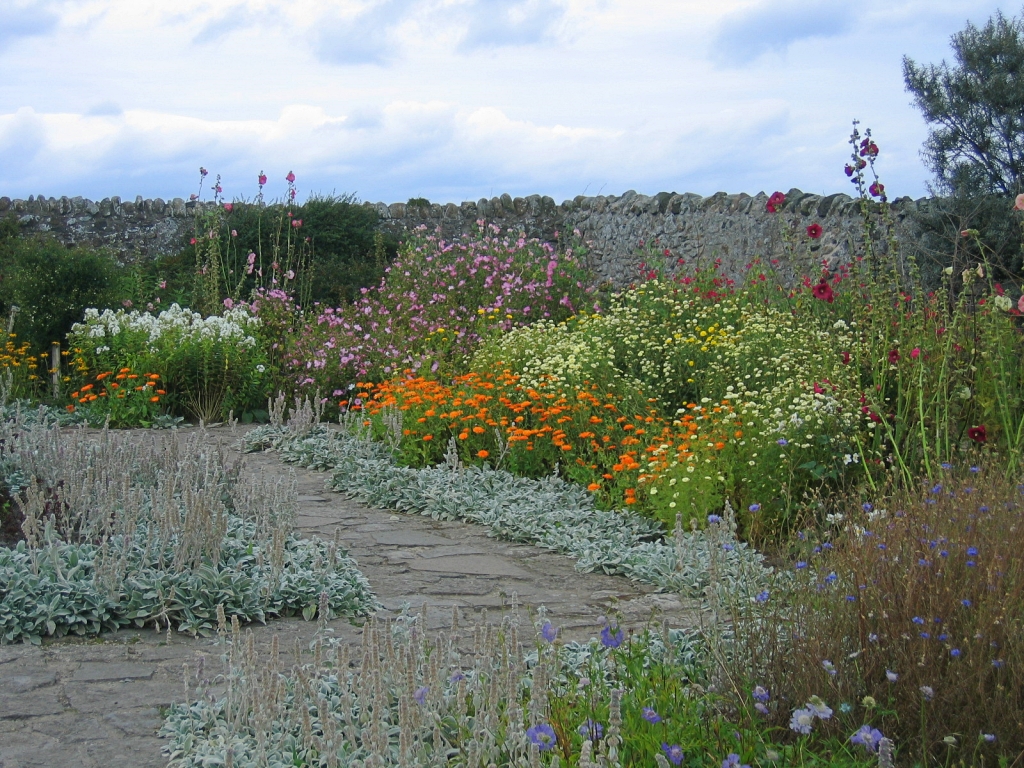 Colourful Flowering Beds in the Gertrude Jekyll Garden © essentially-england.com
Colourful Flowering Beds in the Gertrude Jekyll Garden © essentially-england.comLindisfarne - whether the castle, the priory, the dunes, or this tiny garden - moves me deeply every time we come here. So it's no wonder that I recommend it as a day out or even just a brief stop while you're travelling between England and Scotland. It's a marvellous place to take a breath and just be. And whichever part of the island you choose to visit, you will find something intangible to take back with you when you leave. Just make sure to keep an eye on the tide.
For more information on Lindisfarne Castle and the Gertrude Jekyll Garden please follow this link to the National Trust website.
Where We Stayed
For our March 2024 stay in Northumberland, we chose Sunningdale Cottage in Rothbury. This wonderful, cosy mews cottage was just a few metres from the High Street and very convenient for the pubs and restaurants. There’s hillside walking from the door and Cragside House is about one mile away. Sunningdale Cottage is highly recommended by Essentially England.
Are You Planning to Visit Northumberland?
Where You Could Stay
There's a reason Northumberland is one of my favourite English counties. Its landscape is utterly gorgeous with long beaches and empty sweeps of hills that just beg to be walked. In between you can find small towns and pretty villages, conntected by lanes that are great on the bike as long as you have the legs for climbing. And there are holiday cottages to suit all tastes and budgets.
To see other holiday cottages in Northumberland click here. Or check out holiday cottages in other parts of England by clicking here.
Or you could try a family orientated Parkdean Resort in Northumberland.
If you need to find a hotel, then try one of these search platforms...
What You Could See and Do
Even if you stayed a month, you'd find that you don't have enough time to explore the county top to bottom and see everything it has to offer. There's plenty of history from Hadrian's Wall to Lindisfarne in the north with reams of castles and ruins in between. There are beaches and seaside towns like Craster, Alnmouth and Seahouses - and some of the best fish & chips in all of England. There are market towns like Haltwhistle, Rothbury, Bellingham, Berwick, Warkworth and Harbottle to explore. And there are hillsides to climb and the great outdoors to enjoy.
Are you feeling in need of a holiday yet? Here are a few more pages that might give you ideas...
- Berwick-upon-Tweed
- Alnwick Castle
- The Holy Island of Lindisfarne
- Warkworth Castle
- Dunstanburgh Castle
- Cycling in Northumberland - my favourite tandem tour EVER!
- Visit the beach at Alnmouth.
- Stroll around Alnwick town.
And if you want to explore more of Northumberland and its martial history, check out this Northumberland Castle Tour.
